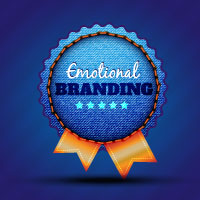-
Traffic
Get More Traffic
SponsoredLinX offers a number of different services to help drive more qualified traffic to your website. Google Ads Management Search Engine Optimisation Social Engage Marketing App Marketing Facebook Advertising Google Ads Mobile“SponsoredLinX are a rarity in today’s market place, they promise a lot but deliver more. Our business has grown by over 400% in one month; we are amazed at the difference they have made.”
-
Conversion
Convert More Leads
Our second step is making sure that your website is able to convert the traffic you receive into leads for your business. Optimising your website to convert more leads is important to a profitable campaign. Web Development Convertopages“I just want to say thank you! The changes that you have applied in our AdWords campaign have definitely seen an improvement on click quality and sales for HippityHop.”
-
Retention
Retain Your Customers
As you build up a customer base you need to make sure to keep engaged and retain your relationship. Facebook Management LinX App“SponsoredLinX fully redesigned our main company website with a fresh, clean and professional look. The ‘Google friendly’ web design were part of the fantastic ongoing service we received.”
Emotional Branding
 For some people, emotional branding may procure thoughts with negative connotations, but what emotional branding means today compared to its inception, equals quite a large difference. If we cast our thoughts back to before the Wall Street crash in 1929, emotional branding was used to convince consumers that what you owned and what you used was an extension of yourself – today, this is now something some people really do believe in. Our belief in the materialistic belongings in our lives is rather telling of this. Depending on the car you drive or the suburb in which you live directly relates to our status in society. Back in the 1920s though, irrelevant objects became powerful emotional signals and this equalled the beginning of emotional branding. Emotional branding today, however, is much more connected to your brand’s story and the authentic connections your brand makes with customers. What was perhaps once seen as being manipulative has evolved to be seen as genuine.
For some people, emotional branding may procure thoughts with negative connotations, but what emotional branding means today compared to its inception, equals quite a large difference. If we cast our thoughts back to before the Wall Street crash in 1929, emotional branding was used to convince consumers that what you owned and what you used was an extension of yourself – today, this is now something some people really do believe in. Our belief in the materialistic belongings in our lives is rather telling of this. Depending on the car you drive or the suburb in which you live directly relates to our status in society. Back in the 1920s though, irrelevant objects became powerful emotional signals and this equalled the beginning of emotional branding. Emotional branding today, however, is much more connected to your brand’s story and the authentic connections your brand makes with customers. What was perhaps once seen as being manipulative has evolved to be seen as genuine.
Fast forward to today. Take a look at the Christmas advertising campaigns by David Jones and Myer. David Jones’ tag line is ‘The things we do for love’, while Myer’s is, ‘Find wonderful’. When actually looking at these taglines separately to the two giant department stores, there is no connection to what these stores are really selling – products. An article in Forbes written in August this year says that, “To create valuable, sustainable customer relationships, great brands don’t sell customers on contracts — they seduce them with connections. Impactful, memorable, emotional connections lead to true brand loyalty”. This is exactly what the two department stores are trying to do; they’re attempting to make emotional connections with consumers to convince them to make purchases from their brand. Purchasing an item from David Jones is sending a message to the consumer that they’re purchasing this item ‘for love’. Love of course being one of the strongest emotional connections people can make. Myer’s ‘find wonderful’ gives the impression of escaping the mundane every day. The two messages are trying to convince consumers to make purchases based around these emotional messages.
Two brands which have successfully been able to integrate the technique in their brand story are Red Bull and Pampers. Shuvo Saha, who works for Google, discusses the two companies and how they have been able to achieve this in the clip below from FutureLearn.
How brands are changing- a view from Google
Whether you agree with the technique or not, emotional branding is something that all businesses practice on some sort of scale. What’s interesting today is that even though we are ruled by so many of the same desires and wants that we experienced before the Wall Street crash in 1929, emotional branding is now designed to be done in a different way – the brand wants to been seen as aiding the customers in their wants and needs, and to be seen creating connections and relationships, not money and sales to promote consumerism. The idea is that in creating these lasting relationships, people will choose to spend their money with particular brands because of them and, that’s why brand loyalty has become important again.
Emotional branding has evolved and changed from what it initially set out to be. While consumers used to be seen as passive consumers, today, brands see consumers as people who are able to make active and informed decisions on brands. Emotional branding now has more to do with brand loyalty, not manipulation. This in turn has much to do with why your brand’s story is so important. Your brand story needs to be authentic, because consumers will see through it otherwise. How your brand makes people feel is still important (buyer’s remorse, anyone?) but it’s backing up that emotional connection with harder stuff; I’m talking reviews, customer service, warranties, etc. Making the emotional connection is not enough anymore, and therefore emotional branding is something which needs to be taken seriously. Customers will feel as though your brand does not care about them as a customer if there is no emotional connection, but they will also feel as though they have been taken advantage of if it’s the only connection your brand attempts to make.


